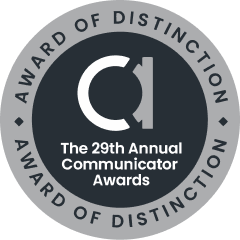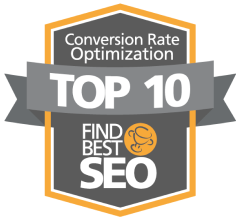Michelle Liro | Vice President of Demand Generation | Definitive Healthcare
The hand-in-hand partnership of the sales and marketing function is critical to a successful account based marketing (ABM) strategy. In this episode, Michelle Liro chats with us about her experiences working with sales teams to execute effective demand generation and relationship management throughout the customer lifecycle.
Transcripts
[Laura] (00:05): Joining us today is Michelle Liro, Vice President of demand generation at Definitive Healthcare, a healthcare technology company based in the Boston area that provides leading intelligence on the healthcare provider market. As an early adopter of account-based marketing, Michelle is talking to us about her experiences, particularly as they relate to the joint partnership of sales and marketing throughout the customer life cycle. Before we get started, I’d like to share a bit of background on the show. She’s been working in software and technology B2B marketing for the last two decades on both the agency side and the client side. Currently, she oversees the demand generation and marketing operations strategy for Definitive Healthcare. Michelle enjoys the intersection of the art and the science of modern marketing by using the right data and technology to find the target at the right companies with the right message at the right time.
Welcome, Michelle.
[Michelle](01:20): Welcome. Thanks for having me today.
[Laura] (01:22): Of course. So let’s talk for a second about account-based marketing, ABM. It’s really changed fundamentally the way marketing and sales work together. So focusing for a minute on the early stages of implementing an ABM strategy, what kinds of challenges have you had in composing the target account list?
[Michelle](01:42): Sure. So I think the heart of any ABM strategy starts with that collaboration with sales, for sure, making sure that both sales and marketing around the same page about who we’re trying to target, what that message is that we want to target them with and what the goals of the program are. If you don’t have agreement on that from the outset, you’re going to have a very challenging time understanding who you’re going after and how to select those accounts. So, for sure, getting on the same page and really collaborating closely with sales to understand the market we’re going after, what the ideal customer profile looks like, and then agreeing with them on how we’re going to identify who those accounts are.
Is it going to be by account size, by industry, by type? And making sure you really explore that with them so that you can start with the right list because the list is at the heart of account-based marketing. If you can’t agree on the list, the program is sort of doomed to failure from the start if sales and marketing don’t agree on who we’re going after and what that message is that we’re going after them with.
[Laura] (02:45): Absolutely true. Yeah. So how have you seen the relationship of sales and marketing change over the course of the execution?
[Michelle](02:53): I would say it’s really evolving. When I think back to 10 years ago, I think you had marketing literally or figuratively on one side of the building doing their thing and you had sales on their side doing their own thing and maybe marketing would occasionally give an update to sales to say, “Here’s the programs that are running,” but there wasn’t a whole lot of collaboration between the teams. I think that’s really changed and I think that notion of the account-based approach is at the heart of it because I think sales fundamentally has always approached the market from an account perspective. Whereas marketing took a broader messaging approach. I think now marketing is recognizing that they can collaborate much more closely with sales if they work together to go after the same accounts at the same time, rather than marketing doing one set of projects and programs and sales doing another.
So I’ve really seen it evolve over the last 10 years, especially with the rise of a lot of the tools and technology behind the scenes, the data that helps inform the account selection and all of the tools that both marketers and sellers have to reach their target accounts. You’ve really seen those two teams come together. You now have marketing operations teams, sales, operations teams, and a lot of companies are actually evolving into what they call revenue operations teams. So there is no more marketing ops or sales ops. They’re simply revenue operations, which is a team that works across marketing and sales to orchestrate the entire life cycle of the customer
[Laura] (04:21): I think that’s such a good point, that we’ve seen a rise in the CRO, chief revenue officer title and/or chief commercial officer title. I think that has really substantially changed. These changes have to come from the top down and that’s such a good indicator of that.
[Michelle](04:39): Yeah, for sure.
[Laura] (04:40): What are some areas, maybe either process areas or technology areas, that you’d like to see improved?
[Michelle](04:48): So I think the good news is you’re seeing a lot more collaboration between marketing and sales getting on the same page about, what are the right types of programs to run, which industries or accounts do we want to go after? So I’m seeing a lot of really good collaboration there. Now, I think it’s sort of… If you think of it as people process technology, I think the people piece is good. Everybody’s collaborating and I think marketing and sales are very supportive of each other and we’re all aiming at the same goal. So that part is good, but then you have the process and the technology. There certainly are a lot of technologies that can support these, in fact, almost an overwhelming amount of technologies that can support these various types of processes. But then there is that process piece of a lot of times referred to as orchestration.
So if we all agree, let’s say for example, we have 100 accounts and we have a top 100 account program and marketing and sales degree that we’re going to go all in on these 100 accounts and we construct this amazing program with the right content at the right time, and we want to have marketing touches and we want to have sales touches. Well, how do you orchestrate all of that across 100 accounts? There certainly tools out there that can really support and help that, but then it’s a matter of what about the process? How does marketing communicate to sales? What touches need to happen and when, and how to sales understand which accounts have engaged with the programs, which accounts are unengaged with the programs, when should they reach out to make a call, or when should it be marketing taking the lead to take the next step in the nurture process?
So those pieces are still definitely very much a work in progress as the industry evolves. There are some really interesting tools out there that can help. A lot of these account-based platforms, if you look at companies like Terminus or Demandbase One or 6sense, those are just some examples of these types of companies that have these account-based orchestration platforms that can help you orchestrate all of this together. So I think over the course of the next three to five years, you will definitely see this market evolve and mature as sales and marketing teams figure out how to more effectively orchestrate the overarching plan, but it’s still definitely a bit challenging today. I think everyone knows what we want to do. Now, we just have to figure out how to do it.
[Laura] (07:11): All right. That’s sometimes the more difficult part. So with the rise of SaaS, software as a service, what are some implications for marketers beyond the initial close deal and working together with sales?
[Michelle](07:26): Yeah, I think in the world of SaaS, back in the days of, particularly in the software industry, marketing had the responsibility to get somebody’s attention, convince them it was the right solution for them and get them all the way to a closed one sale, working hand in hand with sales, of course, to get a prospect into a happy customer who’s made a purchase. But now with SaaS, which is really the subscription-based model, it’s really about influencing that… That life cycle never ends because you have to reconvince that customer, depending on the nature of if you have a one-year contract, a three-year contract, whatever it is, they’re coming up for renewal. So the marketing never stops.
There used to be a part when marketing stopped and sales and/or the customer team took over, but that really never ends because you have to continue to communicate the value of whatever your product or solution is to the customer because there’s going to come a point when they have to make a… They’re remaking that decision to purchase your product or your service once a year or once every two years depending on the nature of the length of the contract. So it really becomes that whole life cycle of post-sale. In terms of adoption, have they successfully onboard and are they adopting the product? Are they seeing value out of it? Getting information in front of them that there’s new ways they could get value out of the product, new use or other ways they could be using your product or service.
So marketing’s role has really evolved not only to attract someone’s attention in to get them to see that they have a challenge and that your product or solution can solve it, convince them that you’re the right one versus the competitor. Now, it’s that ongoing relationship that you have to continue to think about every step along the way of that life cycle all the way up until somebody becomes a raving fan of your product and, what we would call, an advocate, which can then frankly, feed the front of your cycle again to have them out there telling their story and why your product or service has really helped them advance their business because then that will convince new people to take a look at your product. So it’s this ever ongoing life cycle now that marketers really need to think about all the way through because it never really ends because you’re always reselling, if you will, the value of your product every time they come up for renewal.
[Laura] (09:55): True. True. So if you could leave people with maybe a few actionable tips to breaking down the silos and improving sales and marketing communication, what might those be?
[Michelle](10:07): I would say the first is mindset. I recently joined Definitive Healthcare about three months ago and these were some of the exact conversations I had with my sales leadership when I joined. Number one, within my first week, within my first day, I made it a point to reach out to sales leadership because we are the commercial team for the organization. My title may say marketing and their title may say sales, but we are the commercial organization for the company. It is our responsibility to be acting and thinking as one team because we all have the same goal at the end of the day. So I’d say you definitely want to establish those relationships early and make sure that your attitude, when you come in every day is that you are one team. It’s not sales versus marketing or us versus them. It’s one team with a common goal. So to me, that mindset more than anything makes a huge difference because I’ve seen it when that’s not the mindset and that’s when you start to set yourself up for that adversarial relationship with sales, rather than a collaborative relationship with sales.
I think the second thing is there’s this notion of sales has always carried the burden of hitting the number. I think marketing should also feel just as much of an obligation to hit the number as sales. We all play different roles at different parts of the sales cycle, for sure, but it’s not enough to walk in and say, “Okay. We did our job. Here’s your leads. Not my problem anymore.” Marketing and sales should be working together all the way through. Our job as marketers is to deliver those high quality leads to the sales team and then to continue to make sure that sales has what they need all the way through to close in terms of additional materials that they might need any way that we can support them along the journey.
So I would say in terms of, how do you develop that strong relationship with sales? I think it really comes from you have to believe that you also have the responsibility all the way through the sales cycle, for sure. I think in most modern organizations, there is a very much an evolving mindset to that end, that at least I personally have seen at most of the companies. It’s really an evolved way of thinking compared to if I think about 10 or 15 years ago when you thought of the roles of sales and marketing and what they used to be. It’s very different now and very collaborative.
[Laura] (12:35): For sure. It’s a dramatic culture shift, but one that I think has a lot of benefits. I know that personally, in marketing teams that I’ve worked on and had exposure to, there is some pushback from marketing teams sometimes to be judged by those KPIs, but yet it is part of life and I agree that taking ownership of those pulls the team together for her.
[Michelle](13:00): Yeah, for sure. I’d say the other tip that I would share is I think sometimes there is a hyper fixation on, on the numbers and the numbers are very important, but I think it’s also important to take a step back and remember that we’re marketers as well. Most people didn’t get into marketing to manage spreadsheets and numbers. They got into marketing for the creative side of it. So that’s where the fun part can come in. We obviously have an obligation coming into a company to help the company achieve its business goals. That being said, we can absolutely have a lot of fun along the way in terms of with really creative, fun campaigns, fun content, really using all that creative energy to create some really cool content campaigns, innovative programs that will ultimately allow us to achieve the business goals, for sure. I tend to find that there tends to be a hyper focus on the numbers and the KPIs and those are all very critically important, but don’t forget to have fun along the way too, and use that creativity on the campaigns as well.
[Laura] (14:12): Such good advice. That’s good advice. Well, thank you so much for all your wonderful insights today, Michelle. We really appreciate your time.
[Michelle](14:19): Yeah. Thank you as well.
[Laura] (14:21): Have a great afternoon.
[Michelle](14:22): You too.














